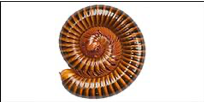
Millipedes are small crawling pests that live in the soil within gardens and high moisture areas. Although there are many species of millipede that live throughout California, the most common are the bulb millipede, the common millipede, and the greenhouse millipede. The name “millipede” comes from Latin, translating to “thousand feet.” Contrary to urban legends and popular belief, there hasn’t ever been a reported case of millipedes with 1,000 legs. Instead, they have between 40-400 pairs of legs depending on the species, of which there about 10,000. Millipedes are slow moving and tend to curl up into a tight ball when disturbed, releasing a stinky scent.
What attracts millipedes to my house?
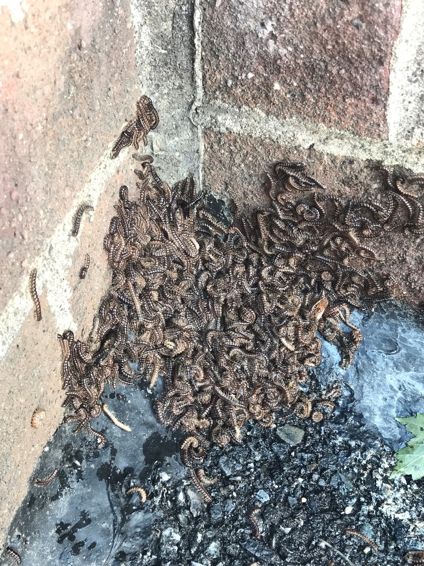
Millipedes thrive in moist soil, eating dead or decaying plant matter. Most millipedes live under rocks, within mulch beds, gardens, and flowerbeds. Because they thrive outdoors, millipedes cannot reproduce indoors and will quickly die if they can’t find their way back outside. Millipedes are merely a nuisance pest. They aren’t a health risk because they do not bite humans, do not spread disease, infest human food, or cause any structural damage. If you find them indoors, it’s typically because rain flooded the soil where they live and pushed them inside. They may even fall into your pool if they mistakenly seek moisture there.
What’s the difference between centipedes and millipedes?
Millipedes and centipedes are both arthropods that have segmented bodies and several pairs of legs instead of wings. Both pests are commonly found in California, but you’re much more likely to see a centipede in your home than a millipede.
Centipedes and House Centipedes
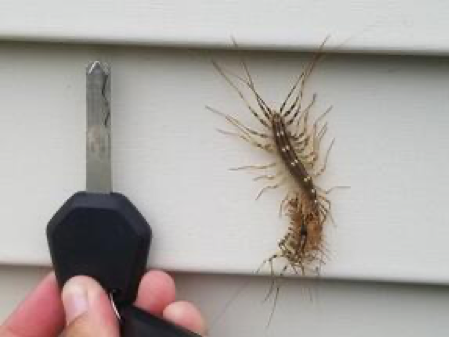
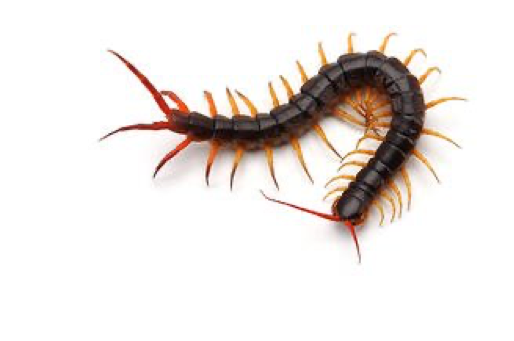
Legs: 15-177 body segments which typically have one pair of legs each
Size: 1/8-6 inches long
Color: Color varies. Common house centipedes are yellow and dark brown.
Diet: spiders, crickets, ants, cockroaches, silverfish, other small insects
Movement: rapid spurts
Millipedes
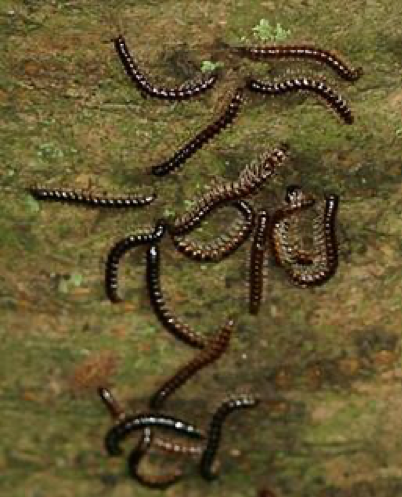
Legs: 40-400 pairs of legs depending on species
Size: typically 1-2 inches long
Color: blackish brown
Diet: decaying wood, decaying or dead plant matter, and occasionally decomposing animals
Movement: slow, curls up when in danger
Are millipedes dangerous?
Millipedes do not sting or bite. As a defense mechanism, millipedes will curl up and release an unpleasant scent. They are not dangerous, wood-destroying, poisonous, or a threat to your pets, food or possessions. If you see millipedes in your home, do not be alarmed.
How can I prevent millipedes?
You can prevent millipedes by sealing cracks and crevices that are possible entry points and keep vegetation and moisture of any sort away from the exterior of your home. Millipedes aren’t very big, so they don’t need a large hole to get into your house. After heavy rains, it’s especially likely that millipedes will be pushed into your home if an entry point exists. The especially dry and hot weather that we experience creates an uncomfortable environment for millipedes, so they may be drawn into your home if you have water damage or humidity in your home, shed, or garage. Finding millipedes in your home could be a sign or water damage. Millipedes need plant matter to survive, which is not something that’s readily available in your home. Simply vacuum them up as you see them because they will die in 24-48 hours indoors. If you follow all of these tips, you’ll also be taking proactive steps to prevent other common household pests such as spiders, crickets, silverfish, and centipedes.
What is a Millipede? Professional Pest Control Services in Tracy CA
Serving



